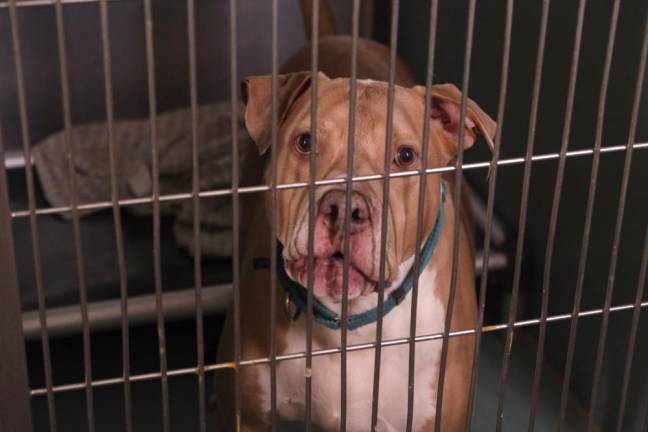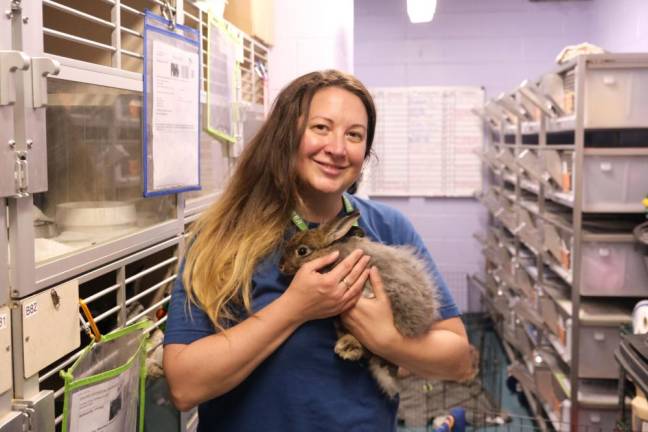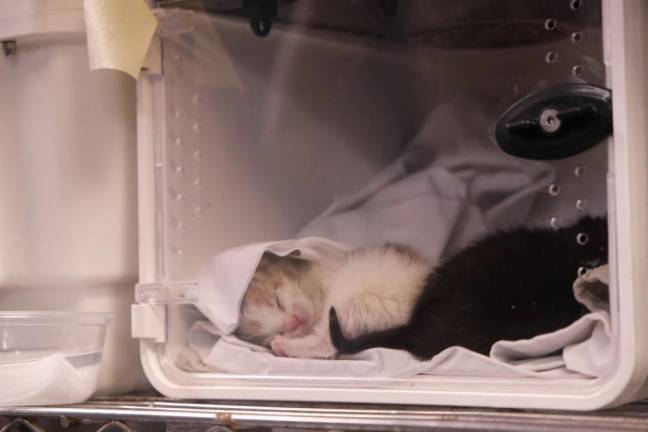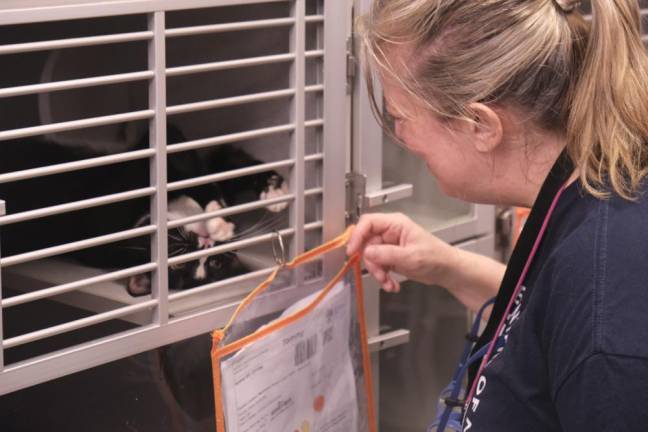Insufficient Funding and Overcrowding in NYC Shelters Contribute to Spike in Euthanizing
The shelter system is 65% over its humane capacity for dogs and 15% over its humane capacity for cats, according to an ACC board presentation this June




Animal Care Centers of New York City are experiencing a spike in euthanizing due to the overcrowding of shelters and a lack of adopters.
The shelter system is 65% over its humane capacity for dogs and 15% over its humane capacity for cats, according to an ACC board presentation this June. This coincides with a 77% and 30% increase in the dog and cat populations, respectively, compared to the same time last year.
Monthly data reports released by the organization indicate the overall placement rate has steadily declined since January and that shelter euthanasia has increased from 76 animals in January to 114 animals in May.
The ACC’s Director of Marketing and Communications, Katy Hansen, said the most common reason people surrender their pets stems from financial issues that have been exacerbated by inflation. Along those lines, ACC data shows that the overwhelming majority of surrenders occur in result of personal circumstances as opposed to animal behavior or health.
Financial setbacks can have various direct and indirect consequences, such as making necessities like pet food unaffordable for owners. In more extreme cases, individuals may be forced to relocate to housing that does not permit pets due to eviction.
However, overcrowding at shelters has dire consequences, such as the spread of disease, overworked staff members, and stress induced animal behavioral issues, which Hansen says “makes them even harder to place in a situation where it’s already hard to place even the easiest of animals.”
“We try and get them walked and exercised as much as we can, but we don’t have enough resources to walk them as much as they should be,” Hansen explained. Additionally, Hansen said dogs can get a little stir-crazy which can ultimately take the form of aggression.
“What are we going to do if we have 100 dogs, and we have five that are so aggressive that we can’t even walk them anymore? Those are the kind of tough decisions we have to make,” she added.
The employees of city-funded shelter systems have, for decades, faced severe backlash for poor outcomes — whether that be in regard to substandard facility conditions or euthanasia rates — despite low pay and long hours. Yet, these outcomes are largely dependent on the funding they receive from their local governments. The same goes for the New York City shelter system, which is historically underfunded.
The ASPCA originally served as the city-contracted animal welfare organization before announcing their contract termination in 1993, citing that their budget of $4.5 million was insufficient to properly care for the animals in their possession. When former Mayor Rudy Giuliani created the ACC — formerly known as the Center for Animal Care and Control — he provided with them with the same $4.5 million budget.
What has ensued since the organization’s inception is a long history of inadequate funding culminating in animal neglect, in addition to the termination of employees who have criticized the shelter system. In October 2002, the ACC fired Executive Director Haggerty-Blohm after she said animals had died due to budget cuts the previous week. She was succeeded by Julian Prager, a pit bull breeder.
During his time as Manhattan’s Borough President, Scott Stringer released a 2013 report calling to restructure the ACC. Stringer suggested, as the Shelter Reform Action Committee had for years, that the Department of Health and Mental Hygiene’s oversight of the ACC was an inappropriate conflict of interest which left “little room for [ACC] to question DOHMH priorities and decisions.”
Acting as NYC’s comptroller in 2020, Stringer also released an audit detailing poor conditions within the ACC’s facilities.
Today, NYC shelters receive the least amount of funding per capita in comparison to the three other most populous cities in the United States, two of which — Los Angeles and Houston — receive about three times the amount of funding per capita.
In January 2019, the ACC signed a 34-year, $1.4 billion maximum reimbursable amount (MRA) contract with the city. Since the contract takes the form of an MRA, that does not mean the ACC receives $41 million per year, but rather that is the maximum amount the city would ever pay them. In fact, the ACC typically receives less than half of what they could receive annually, with their 2023 budget just under $18 million.
The city has made long overdue strides as of late, with construction beginning to create a new shelter in the Bronx, the end of construction on a Queens shelter, the construction of a small adoption center in Manhattan, and the anticipated renovation of the Brooklyn shelter to begin this fall.
Hansen says things are looking up thanks to the City Council members who have advocated on the ACC’s behalf, as they just received a $3 million budget hike for the 2024 fiscal year. Additionally, several City Council members have used their discretionary funds to aid the ACC, with Queens Council members Francisco Moya, Robert Holden, and Vickie Paladino giving out the most funds for 2024.
Council member Holden has put $50,000 of his discretionary funds for the 2024 fiscal year alone towards different entities that benefit animal welfare. Back in 2021, Holden advocated for the creation of a committee specifically devoted to animal welfare. Holden’s Chief of Staff Daniel Kurzyna says that although “there has been little movement on the idea of creating a standalone committee,” it is “something we still advocate for.”
The ASPCA continues to partner with the ACC and take in their animals who require more comprehensive resources.
“By dedicating our resources and expertise to animals with medical and behavioral challenges, we’re supporting the animals who need it most and helping ACC free up their resources to assist more cats and dogs in need across the city,” ASPCA spokesperson Alexander Craig stated.
Hansen described the homeless pet population in NYC as a “community issue” and suggested a few ways people can help. She emphasized the importance of volunteers and said that they currently need the most at their Brooklyn facility.
She noted that, “one of the perceptions of volunteering at an animal shelter is that you will volunteer and get to walk puppies all day, and that’s not necessarily the case when you’re at an open admission shelter.”
Hansen suggested that people also help by sharing the profiles of animals on social media, which has the ability to attract potential adopters. You can find more information on how to help out the ACC here.
